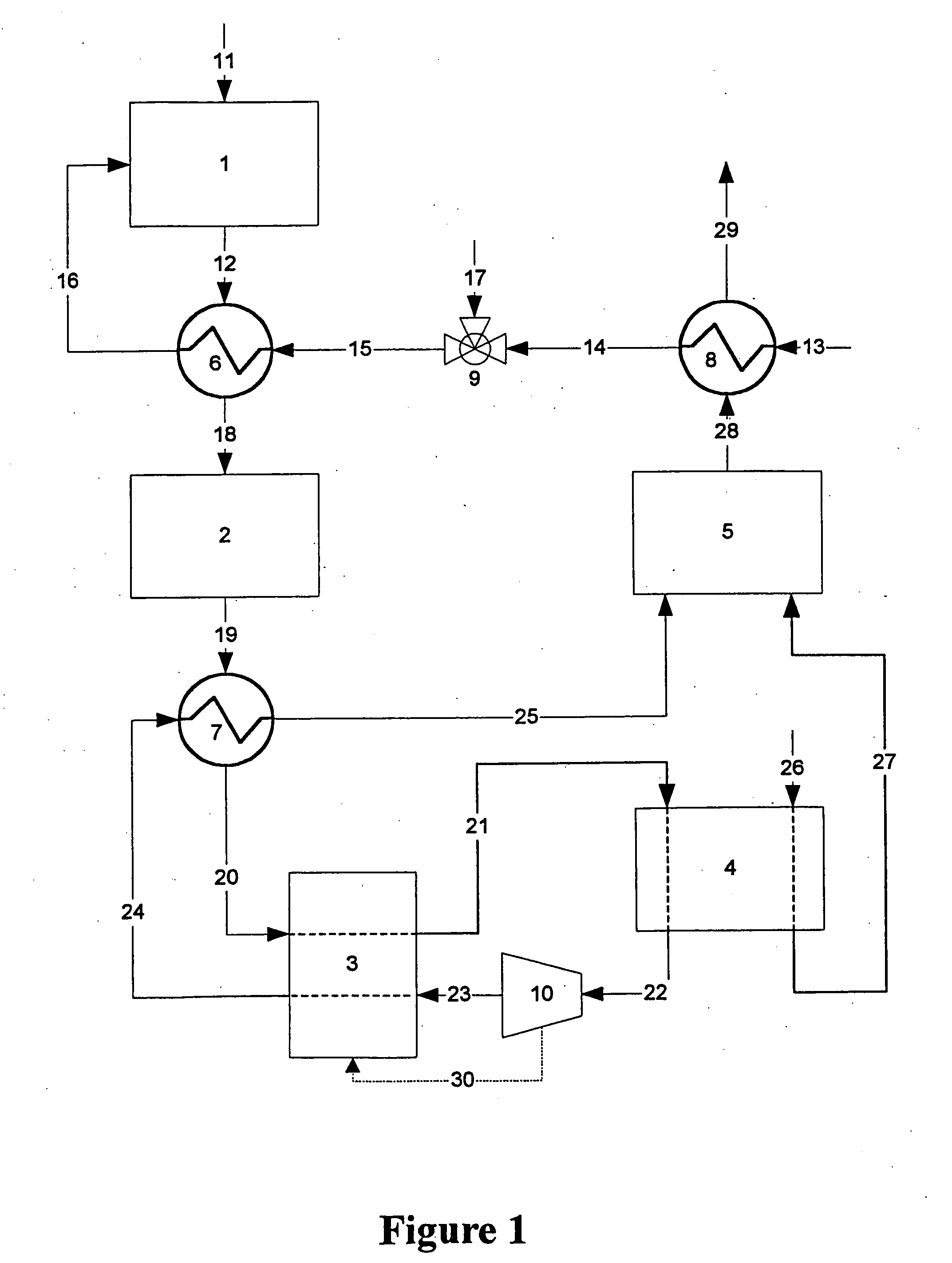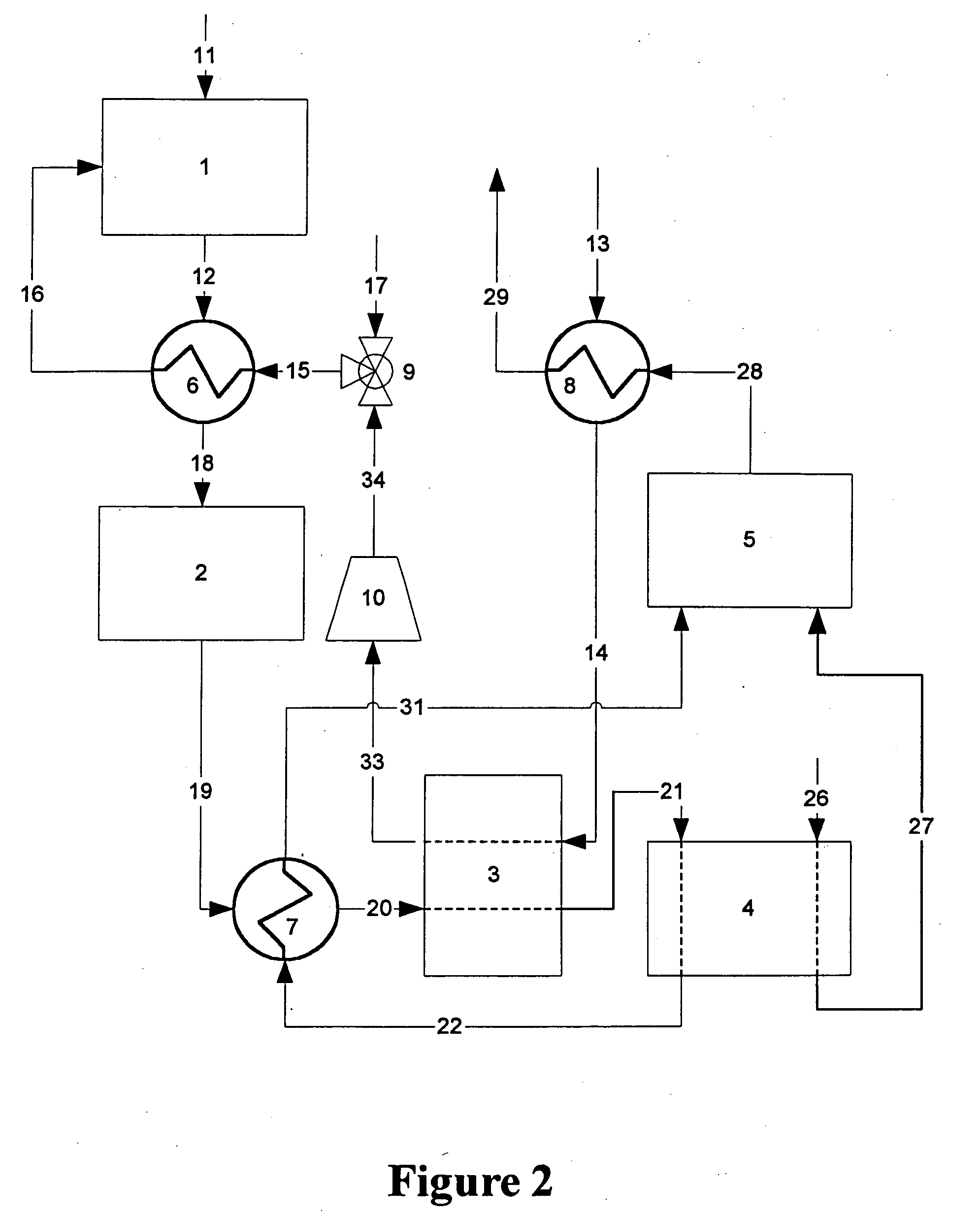Carbon monoxide adsorption for carbon monoxide clean-up in a fuel cell system
a fuel cell and carbon monoxide technology, applied in the direction of physical/chemical process catalysts, other chemical processes, separation processes, etc., can solve the problems of consumption of hydrogen, and high cost of catalysts, so as to reduce carbon monoxide content, reduce hydrogen consumption, and eliminate the effect of us
- Summary
- Abstract
- Description
- Claims
- Application Information
AI Technical Summary
Benefits of technology
Problems solved by technology
Method used
Image
Examples
Embodiment Construction
[0014] Flow diagrams of a preferred and alternate embodiment for a fuel processor system for a fuel cell vehicle using an adsorber as the primary means for carbon monoxide cleanup are shown in FIGS. 1 and 2, respectively.
[0015] Referring now to FIG. 1, hydrocarbon fuel such as, for example, gasoline, natural gas, methane, propane, methanol, ethanol, and / or mixtures thereof, etc. is fed into the fuel cell engine through stream 11. The fuel is fed into primary reactor 1 where it reacts with the steam / air mixture entering reactor 1 though stream 16. The steam is generated in heat exchanger 8, where liquid water from stream 13 is heated and vaporized by the hot exhaust stream 28 coming from combustor 5. The steam exits heat exchanger 8 in stream 14 and is blended with compressed air stream 17 in mixing valve 9. The steam / air mixture stream 15 is further heated in heat exchanger 6 to form hot steam / air mixture stream 16 for feed into primary reactor 1. The heat required to raise the tem...
PUM
| Property | Measurement | Unit |
|---|---|---|
| temperature | aaaaa | aaaaa |
| temperature | aaaaa | aaaaa |
| operating temperature | aaaaa | aaaaa |
Abstract
Description
Claims
Application Information
 Login to View More
Login to View More - R&D
- Intellectual Property
- Life Sciences
- Materials
- Tech Scout
- Unparalleled Data Quality
- Higher Quality Content
- 60% Fewer Hallucinations
Browse by: Latest US Patents, China's latest patents, Technical Efficacy Thesaurus, Application Domain, Technology Topic, Popular Technical Reports.
© 2025 PatSnap. All rights reserved.Legal|Privacy policy|Modern Slavery Act Transparency Statement|Sitemap|About US| Contact US: help@patsnap.com



